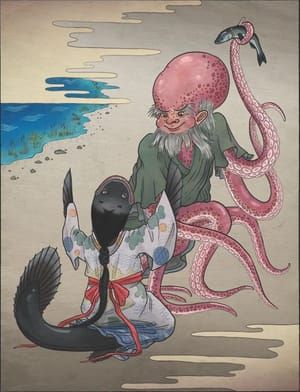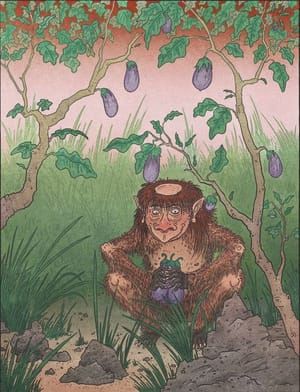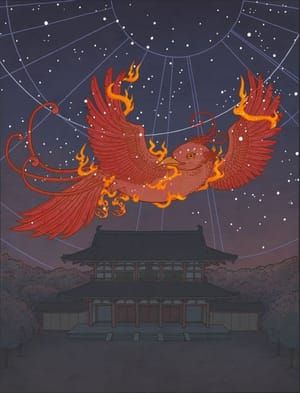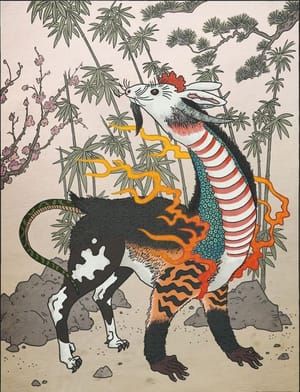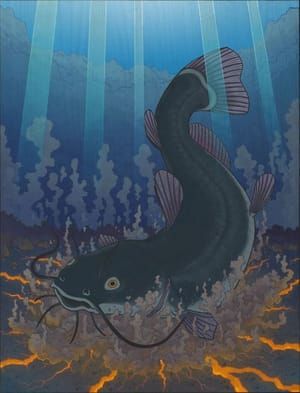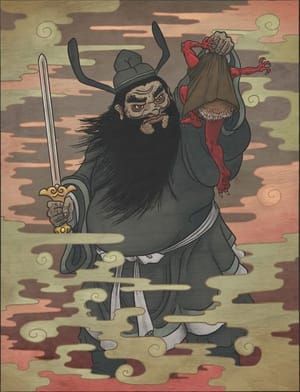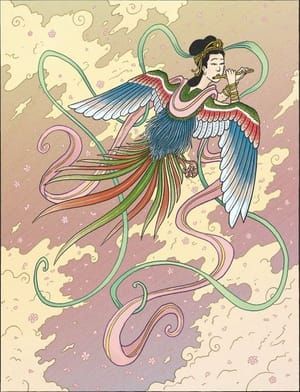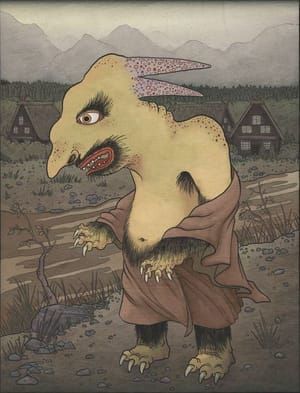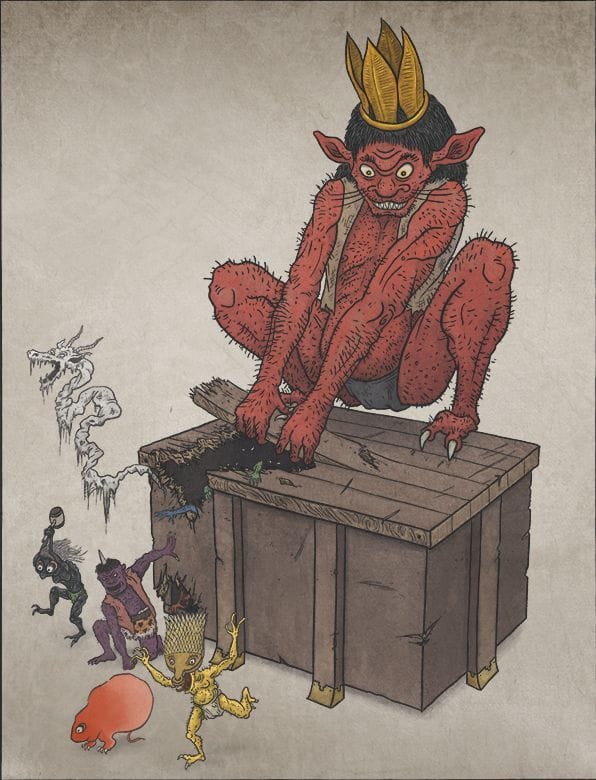

Chirizuka Kaiō
Matthew Meyer
塵塚怪王
Chirizuka kaiō is a red, hairy demon who resembles a small oni. His clothing is old and tattered. He has wild hair and wears a crown on his head. He is the king of the dust heap, but is also sometimes thought of as the king of the tsukumogami—the animated spirits of trash and discarded objects.
Chirizuka kaiō appears in picture scrolls depicting the night parade of one hundred demons. In these scrolls he is prying open a Chinese-style chest and releasing a horde of tsukumogami—presumably the objects that were stored in the chest and forgotten.
Chirizuka kaiō’s earliest appearance comes from the Muromachi period (1336 to 1573 CE). In the earliest scrolls he is depicted without name or explanation. His name first appears in the Edo period, where he is depicted in Toriyama Sekien’s tsukumogami encyclopedia Hyakki tsurezure bukuro. This book contains a number of yokai based on puns. Chirizuka kaiō’s name appears to be a pun based on essay 72 from Tsurezure gusa, a popular collection of essays from the 14th century. This essay discusses the folly of having too many things—too much furniture in your home, too many pens at your inkstone, too many Buddhas in a temple, too many rocks and trees in a garden, too many children in your home, and so on. However, there is no such thing as having too many books on your book stand, or too much dust upon your dust heap.
In his description of chirizuka kaiō, Toriyama explains that there is nothing in creation which does not have a leader; the kirin is king of the beasts, the hōō is king of the birds, and so this chirizuka kaiō must be the king of the yama uba. The phrase is actually another pun, and refers to a line from the noh play Yamanba. The line explains that worldly attachments pile up like dust, and if you let them build up into a dust heap then you may turn into a yama uba. Despite this phrasing, chirizuka kaiō has come to be interpreted as the king of tsukumogami rather than yama uba. This is most likely because he appears in Hyakki tsurezure bukuro, which is full of tsukumogami. There is no other connection between chirizuka kaiō and yama uba, as chirizuka kaiō has only ever been depicted releasing yōkai from a chest. Perhaps Toriyama used the word yama uba as an allusion to yōkai born from worldly attachment and ignorance. Yama uba are created when one’s improper attachments pile up like a dust heap. Tsukumogami are born out of forgotten household objects whose owners could not bring themselves to properly dispose of. The same kind of improper attachment is what forms both of these yōkai.
Matthew Meyer
artistArthur
Wait what?
